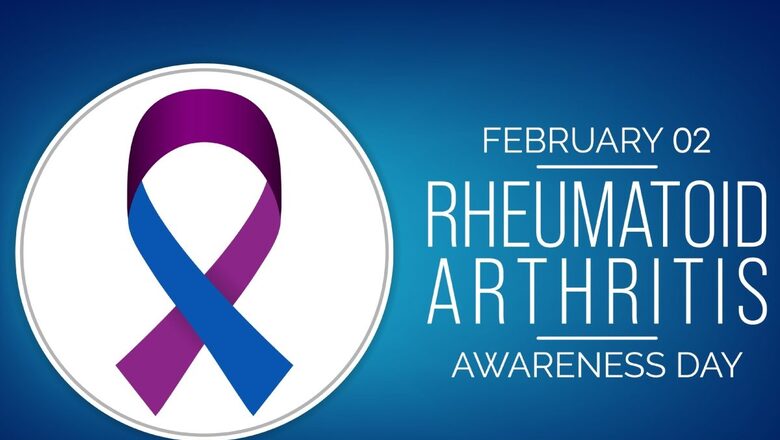
views
Rheumatoid Arthritis (RA) is a chronic autoimmune disease that primarily affects the joints. It causes painful inflammation, swelling, and stiffness, often leading to joint deformity and decreased mobility. While the exact cause remains unknown, it’s believed to be a combination of genetic and environmental factors.
Rheumatoid Arthritis Awareness Day, observed annually on February 2, aims to raise awareness about this widespread condition, its impact on individuals and families, and the ongoing need for research and support.
RHEUMATOID ARTHRITIS AWARENESS DAY HISTORY
The day was established in 2011 by the Rheumatoid Patient Foundation (RPF), now known as the Arthritis Foundation. It serves as a platform to educate the public about RA, advocate for better patient care and access to treatment, and promote research for improved diagnosis, management, and ultimately, a cure.
RHEUMATOID ARTHRITIS AWARENESS DAY SIGNIFICANCE
Rheumatoid Arthritis is a prevalent condition, affecting millions of people worldwide. Early diagnosis and proper management are crucial to prevent joint damage and improve quality of life. Raising awareness empowers individuals with RA to seek timely medical attention, understand their condition, and make informed decisions about their care. It encourages research efforts towards developing more effective treatments and ultimately finding a cure for RA.
SIGNS AND SYMPTOMS OF RHEUMATOID ARTHRITIS
- Joint pain, stiffness, and swellingThis typically affects multiple joints, especially in the hands, feet, wrists, and knees. The pain is often worse in the morning and after periods of inactivity.
- FatigueMany people with RA experience persistent fatigue, making daily activities challenging.
- Loss of appetite and weightInflammation can lead to reduced appetite and unintentional weight loss.
- Fever and low-grade inflammationRA can cause a slight increase in body temperature and general inflammation throughout the body.
DIAGNOSIS OF RHEUMATOID ARTHRITIS
Early diagnosis is crucial for effective management and preventing joint damage. Doctors diagnose RA based on a combination of factors, including:
- Medical history and physical examinationAssessing symptoms, joint involvement, and overall health.
- Blood testsChecking for specific markers of inflammation and autoimmunity.Imaging tests: X-rays, ultrasounds, or MRIs to visualize joint damage and inflammation.
RHEUMATOID ARTHRITIS PREVENTION MEASURES
- Maintain a healthy weightObesity is a known risk factor for RA. Aim for a healthy Body Mass Index (BMI) through balanced diet and regular exercise.
- Exercise regularlyModerate-intensity exercise for at least 30 minutes most days of the week can help reduce inflammation and improve overall health.
- Eat a balanced dietFocus on fruits, vegetables, whole grains, and lean protein. Limit processed foods, sugary drinks, and unhealthy fats.
- Quit smokingSmoking significantly increases the risk of RA and worsens its symptoms.
- Manage stressChronic stress can exacerbate inflammation and potentially contribute to RA development. Practice relaxation techniques like yoga, meditation, or deep breathing.
- Maintain good oral hygieneStudies suggest a link between gum disease and RA. Brush and floss regularly and visit your dentist for regular checkups.
- Maintain air qualityHigh levels of air pollution may be a risk factor for RA. Consider air purifiers in your home and limit exposure to outdoor pollutants when possible.


















Comments
0 comment